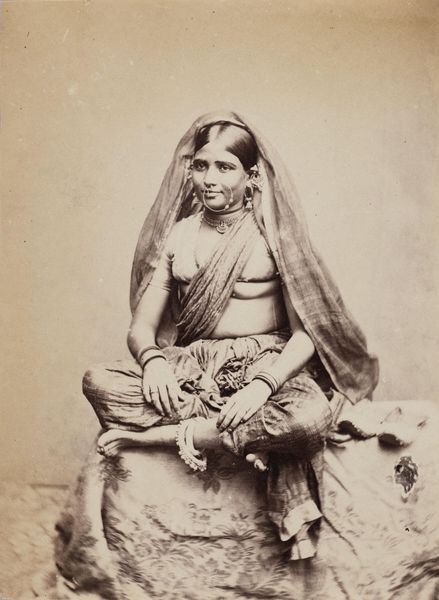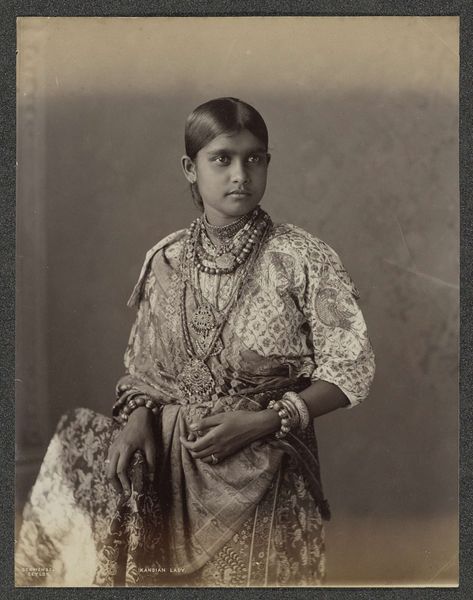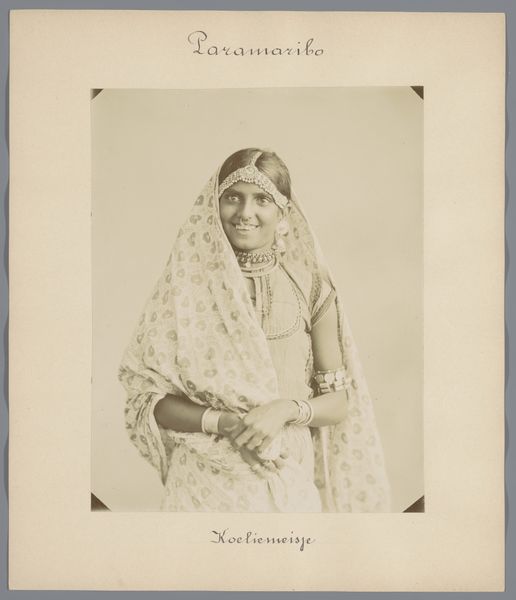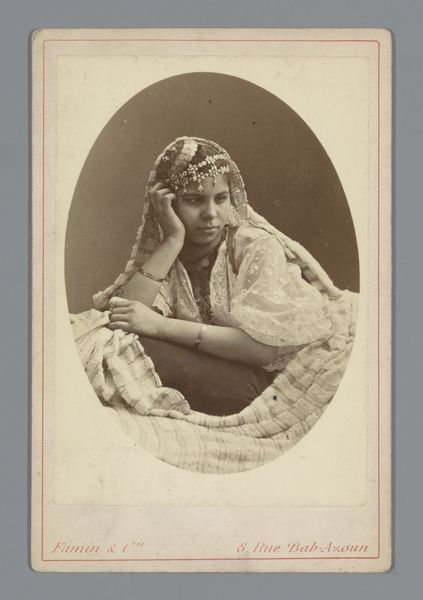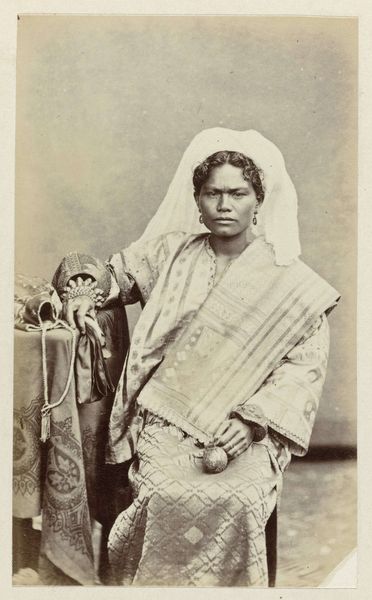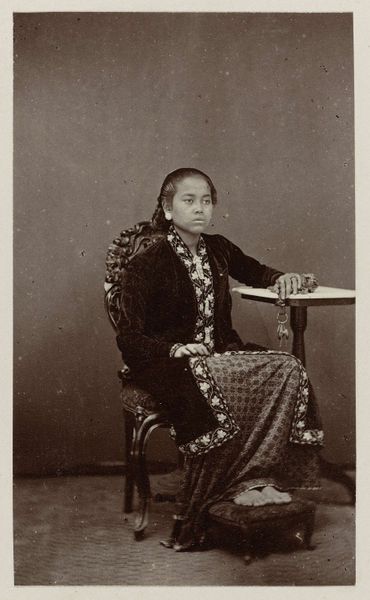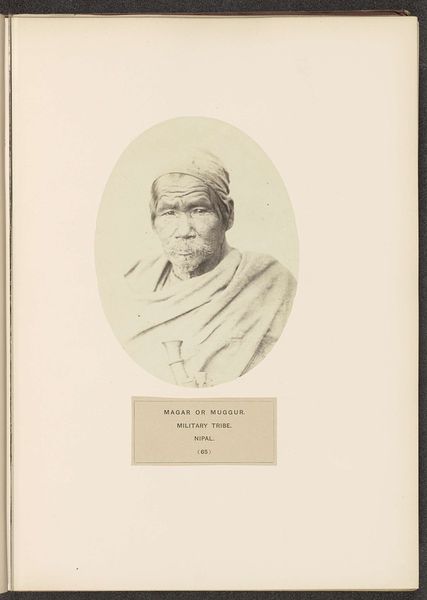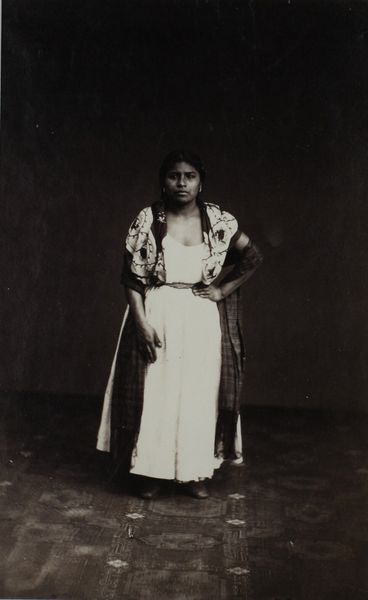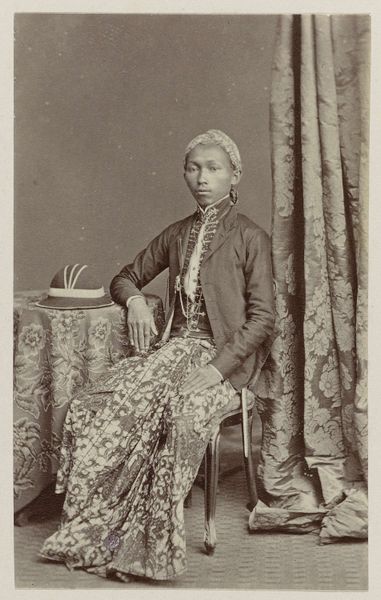
silver, print, photography, albumen-print
#
portrait
#
african-art
#
16_19th-century
#
silver
# print
#
photography
#
orientalism
#
albumen-print
Dimensions: 23.4 × 18.2 cm (image/paper, top corners rounded); 45.8 × 35.6 cm (mount)
Copyright: Public Domain
Curator: Here we have Julia Margaret Cameron’s photograph "Sinhalese Woman," made between 1875 and 1878. It’s an albumen silver print currently residing here at the Art Institute of Chicago. Editor: There’s a compelling gravity to her gaze. The soft focus lends a dreamlike quality, almost as if she’s peering through a veil of time itself. Curator: Indeed. Cameron, though celebrated, often faced criticism for her deliberate soft-focus technique. But looking through a postcolonial lens, we might consider it as a way to subvert the sharp, objectifying gaze often imposed upon colonized subjects. Editor: Interesting. To me, her ornamentation feels symbolic – layers of necklaces that hint at status but also potentially constraints. What kind of cultural meanings were attached to jewelry and adornment for women during this period in Sri Lanka, I wonder? Curator: That's key. Cameron wasn't merely documenting; she was participating in a complex discourse. As a British woman photographing a Sinhalese woman during British colonial rule, her positionality matters. Was she truly seeing this woman, or imposing her own orientalist fantasies onto her? Editor: The drape of her fabric also tells a story; is that the dress traditionally worn by Sri Lankan woman at that time? It reminds me of paintings depicting figures like Cleopatra, enshrouded in this sense of romantic exoticism for a Western audience. Curator: Precisely. And that raises questions about authenticity versus representation. Cameron might have been motivated by artistic goals, but the work inadvertently became part of the broader colonial narrative of exoticizing and othering the East. It reminds of Edward Said's thoughts on representation. Editor: What endures most for me, beyond the social critique, is her direct and unwavering gaze. It feels like a powerful assertion of identity, claiming space and refusing to be completely consumed by the photographer’s vision. Curator: Absolutely. While the photograph carries the weight of its historical context, it also allows for that enduring flicker of resistance and individuality to pierce through. Editor: Seeing the interplay between imposed views and a person’s own, innate presence--it all keeps resonating and prompting these necessary dialogues across time.
Comments
No comments
Be the first to comment and join the conversation on the ultimate creative platform.
